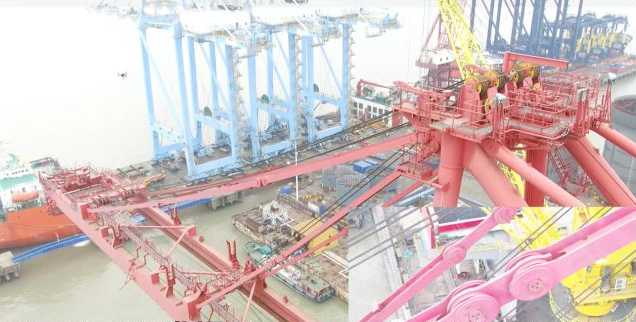In order to ensure equipment safety and production efficiency, large-scale equipment needs regular inspections. However, large-scale equipment has a very high height and complex structure, resulting in low efficiency, high difficulty and high risk of manual inspection.
Taking the port as an example, most of the quay crane equipment in the port is large-scale equipment, generally above 80 meters in height. The traditional manual inspection method generally requires four to five people and takes two to three weeks to complete the inspection of one equipment.
UAVs that have gradually emerged in recent years have excellent air mobility and will be able to play an important role in port equipment inspections. Based on NVIDIA Jetson TX2, Shanghai Boonray Intelligent Technology Co., Ltd. develops an intelligent inspection system for large-scale UAV equipment, which greatly improves inspection efficiency and reduces safety risks for inspectors.
NVIDIA helps meet the challenge of drone inspection
Large-scale equipment inspections generally include different methods such as visual inspection, ultrasonic inspection, and magnetic particle inspection. Among them, visual inspection is the first step, which is essential to discover potential diseases.
After the drone is equipped with a high-definition camera, it can easily reach locations that are difficult to reach by humans and collect high-definition images for timely detection of cracks, rust, and parts falling off.

UAVs conduct inspections of large-scale port machinery and need to collect high-definition pictures of key parts for disease judgment. The fact that the focus point is not on the key part is a major factor in the waste film.
However, the existing automatic drone inspection methods generally only control the drone to fly automatically according to the set route and take pictures at a fixed point. Due to the positioning and control errors of the drone, there is generally a gap between the photos taken and the nodes to be detected by the equipment. Certain deviation. On the other hand, the focus point tends to deviate from the node to be detected, resulting in out-of-focus blur. The above two situations will cause the images collected by the drone to fail to provide effective information and become waste films.
Shanghai Boonray Intelligent Technology Co., Ltd. cooperated with the internationally renowned large-scale port equipment manufacturer and developed a set of intelligent inspection system for large-scale UAV equipment based on NVIDIA Jetson TX2 to meet the challenges of existing UAV inspection.
Application of Jetson TX2 in Intelligent Inspection System
Boonray Technology's intelligent inspection system for large-scale UAV equipment uses DJI M210 UAV as the flight platform, equipped with high-definition cameras, and is equipped with a differential GPS precise positioning module. It is built on Jetson TX2 based on Convolutional Neural Network (CNN) The image recognition and pan/tilt control algorithm of the UAV, through the ground-side node selection program, the flight control program of the drone flight control, and the image recognition of the airborne terminal and the pan/tilt control program cooperate with each other to realize the drone to set the detection node Automatic flight, the adjustment of the PTZ at the node based on the result of image recognition, and the automatic adjustment of the focus point of image shooting.
Boonray onboard smart module, including NVIDIA Jetson TX2 module
The system can automatically control the drone to accurately fly to a location difficult to reach by humans according to the shortest path, collect high-definition images from a specific angle, and discover diseases such as cracks, rust, and parts falling off in time, thereby greatly improving the efficiency of inspection data collection and reducing Safety risks for inspectors.
Structure diagram of intelligent inspection system for large-scale equipment of UAV
Based on the improved YOLO network model, the 1920*1080 pixel image is processed on Jetson TX2, and its system realizes the real-time recognition of the key nodes of the device (the frame rate is about 15FPS). Based on the results of node recognition, precise fine-tuning of the PTZ angle and focus point effectively reduces the scrap rate of images collected by the drone. According to preliminary test results, the scrap rate is reduced by approximately 20%, thereby reducing subsequent data transmission, storage and analysis of invalid data.
UAVs are used for inspections of large equipment and are not restricted by topography, and are especially suitable for line inspections in steep mountainous areas and multi-river landforms. The airborne high-definition camera equipment can perform real-time online positioning and monitoring of faults generated by the equipment, helping to detect and take measures in time to avoid various large-scale accidents.
Based on NVIDIA Jetson TX2, Boonray Technology will develop more inspection platforms for vertical industries, which will greatly improve the efficiency of equipment inspection, save a lot of manpower and material resources, and promote the upgrade of the equipment inspection system.
Longkou Libo Insulating Material Co.,Ltd. , https://www.liboinsulation.com
![<?echo $_SERVER['SERVER_NAME'];?>](/template/twentyseventeen/skin/images/header.jpg)